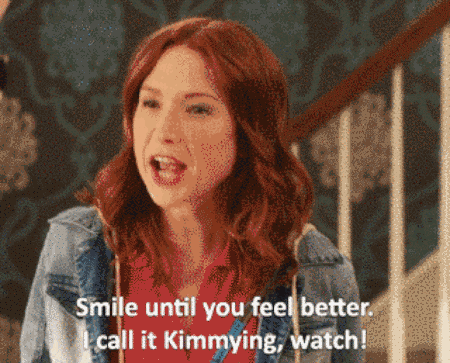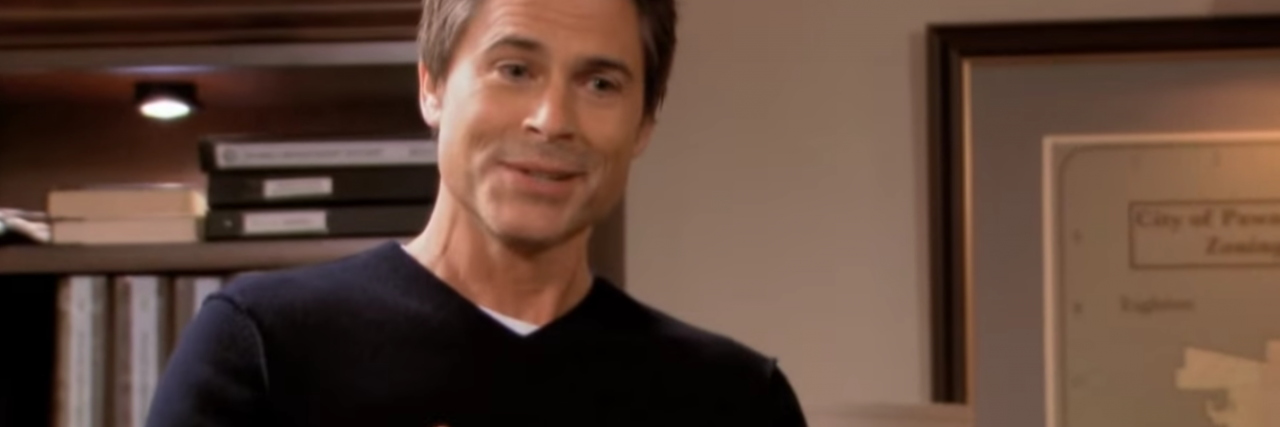The 2 Shows That Portrayed Therapy the Right Way
Out of all of the things I have read and watched in the last few years that address mental health, I feel two shows handle it in a way that showcases the struggle, and breaks down the stigma of seeking help.
The first is Chris Traeger’s journey on “Parks and Recreation.” I love that therapy for him is a clear place of healing. His sessions and his work show how helpful therapy can be when you’re dealing with a mental health issue. For Chris, therapy is the thing that helps him process and come back from a series of really intense episodes. It mirrors my own experience, and it’s so nice to be represented. While they do kind of poke fun at how emotional he is during this time, it’s not mean-spirited. It’s actually super helpful to be able to laugh at how overwhelming and irrational anxiety can make you feel (best quote: “I’m so happy. And so sad.”), and it gives the other characters the opportunity to be encouraging and supportive about his choice to seek help. That last bit is so important; rarely do we see characters congratulating someone on going to therapy and that is such a wonderful way to break down the stigma.
I also really love season 2 of “Unbreakable Kimmy Scmidt,” because, for Kimmy, there’s not a clear breaking point. Kimmy goes to therapy because she’s a normal person dealing with her experiences (yes, I know, not everyone is kidnapped and kept in a bunker for 15 years, but hear me out). She does the same thing we all do: she pushes down her feelings and hides them from others in an attempt to look well-adjusted and emotionally stable.

It’s a coping mechanism that works well for her in the bunker, so she sees no issue with applying it to life after while she’s trying to cope with post-traumatic stress disorder. Her emotions find another way to surface. She starts hitting a guy that wants to kiss her. She denies she’s angry. She burps every time she starts talking about her past. She is all of us — not because of the PTSD, but because of the way she tries to hide and avoid confronting it.
Kimmy’s journey in therapy is so groundbreaking and wonderful because she’s the everyman. She’s someone who has a clear sense of who she is and is capable and independent and she still benefits from therapy because it helps her realize a lot of things about herself and gives her a new way to process not just her trauma, but her emotions.
Her therapist Andrea lays down the most amazing truths, like this exchange:
Kimmy: “I guess I just did it ‘cause I’m nice.”
Andrea: “And that makes you happy?”
Kimmy: “Yeah! Happy as a clam.”
Andrea: “So, like, clenched up tight, full of grit, and if you get pried open you’ll die?”
This is who I was for a long time underneath all of the anxiety stuff, and it really hit home for me. This is hilarious, but it’s also super true: so many of us are like this, so fiercely protective of ourselves that we think we don’t need therapy because the thing we need it for is the thing we see as a strength. We think holding it in, keeping it together, whatever you want to call it, shows we are mature and adult and in control. The ironic thing is we want other people to be vulnerable; we just don’t want to be vulnerable. The first time I had a similar realization in therapy, it blew my mind.
Equally awesome is the moment when Andrea tells Kimmy she’s entitled to her anger. I spend so much time trying to tamp mine down that watching this scene was like a revelation. In the same way I’m entitled to my joy, my sadness and my panic, I’m entitled to my anger. I’m allowed to feel it, and I’m allowed to be mad at people. I rarely allow myself to be angry because, for me, it has to do with control. I don’t want to be angry because I know how intense my temper is and I worry I will say something unforgivable. So rather than learn how to channel and process my anger and use it to build better relationships, I spent a long time pretending it didn’t exist. Like my anxiety, I felt my anger was something that didn’t belong in my world; it was something I needed to get rid of, to stop feeling. But really, it’s not. And that’s the beauty of “Unbreakable Kimmy Schmidt.” It normalizes therapy because Kimmy uses it to help her with “normal” issues. It showcases therapy’s wide range of uses and breaks down the stigma because Kimmy is just like all of us: she’s learning how to process her emotions and her experiences and that there are some things she’s been using as coping mechanisms that actually aren’t such great strategies.
I also really love how Andrea is a mess. Some people are critical of that aspect of her nature: she’s super healthy with strong boundaries during the day, and she’s a promiscuous alcoholic at night. But that’s what I love about her. She’s a real person with issues. She’s not some unattainable, intimidating ideal of what a people think a therapist should be — completely put together with everything figured out. She’s human. She’s messed up. And I think that actually makes her better at her job; she can empathize with Kimmy because she knows what it feels like to be trying to cope and not be able to. She knows what it feels like to feel out of control.
We still have a lot of work to do to break down the stigmas around mental health and treatment. But what is progressive and awesome about Chris and Kimmy is that, in both cases, they were encouraged to go to therapy by the people closest to them and supported in their work. They weren’t treated like something was wrong with them. The suggestion for therapy came out of love and friendship in Chris’ case, and, for Kimmy, Andrea’s recognizing that Kimmy wasn’t OK. These two characters are a huge step forward in eliminating the stigma surrounding therapy and seeking help, and I hope that — now that characters on network TV and streaming services have done this — we will start to see not just more characters getting the help they need, but a variety of them, too.
I feel represented because Kimmy and Chris are both dealing with issues similar to my own, but there are other people whose mental health struggles are still not represented — or represented positively — in main stream culture. And people who struggle with their mental health come in all colors, shapes and ages. We need to see characters in therapy who are kids, adults, South American, black, LGBTQ, plus size, you name it. Everyone deserves to be represented in this battle because it touches all of us. We need to talk about it. And we need to show it: art imitates life, and we cannot act like this is not a part of life.
Speaking as someone who has benefited from therapy and who knows multiple people who have likewise done so, this is perhaps one of the most important parts of life. I will never not be proud of going to therapy. I will always be glad I did. And we need to see more characters who are like that, too.

